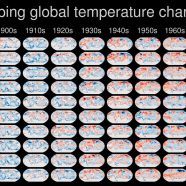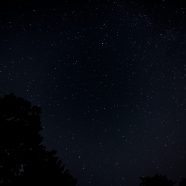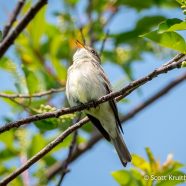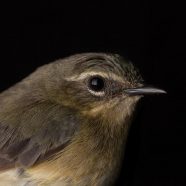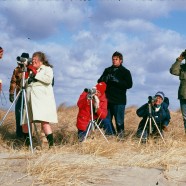Mapping Global Temperature Changes
This is a sobering graphic via the Twitter feed of Ed Hawkins (https://twitter.com/ed_hawkins), Climate scientist at the University of Reading. He said, “When considering changes in global temperature, it’s always important to look at the big picture, rather than obsess over short-term effects” which is why something like the cold and snowy days in the winter are not an indicator of how the planet is feeling. Our lives encompass a very small span of time compared to that of the Earth itself, and we often do not have an appropriate sense of the environmental and climate...
Read MoreThe Big Dipper
Can you spot the Big Dipper just above the horizon between the trees? It can be hard to believe in the midsummer heat but birds are already migrating south for the winter both during the day (various swallows to Eastern Kingbirds to Blue-gray Gnatcatchers) and the night (Red-eyed Vireos to Indigo Buntings to Black-billed Cuckoos). Those nocturnal species use various methods to help them move around our planet – some may use a coastline, others the Earth’s magnetic field, and like people, certain birds gaze at the stars. Various species take in the night sky as a map, just as we...
Read MoreEastern Wood-Pewee
I recently mentioned that we still have flycatchers coming into the region as spring migration wraps up, and even into early June you may find individuals at migratory stopover sites. One such bird was this Eastern Wood-Pewee (Contopus viren), and he provided far better looks here than most do in the depths of the dark forest or higher up in the canopy. Finding him was easy thanks to that “peeeeaaaweeee” call, and he is belting it out in the second photo. Identifying flycatchers by voice makes life so much easier, especially when you cannot always rely on habitat thanks to...
Read MoreWarbler Quiz
Here’s some work for you via RTPI Affiliate Sean Graesser…while setting across North America to write his The Birds of America, John James Audubon discovered 25 species of birds unknown to science at the time. One such discovery was this nondescript warbler that he deemed a different species, and it would become plate 148 in his book. However, it wouldn’t remain a species for long. This bird is in fact a female of one of our more showy North American warblers. What is it? And what did Audubon originally call it?
Read MoreNoble Proctor BioBlitz Challenge at Hammonasset Tomorrow
Noble Proctor BioBlitz Challenge at Hammonasset on May 14, 2016 Please join family, friends, colleagues and students for a celebration of Noble Proctor’s life in the form of a BioBlitz Challenge at Hammonasset Beach State Park in Madison, Connecticut on Saturday, May 14, 2016 from 8AM to sunset. Our headquarters for the BioBlitz will be at the pavilion near Willard’s Island. A BioBlitz is a race to find every species of life possible – birds, mammals, plants, insects, and more. We will form teams to search the park and record all the species we can discover. At 1:00 PM, we will come together...
Read More



